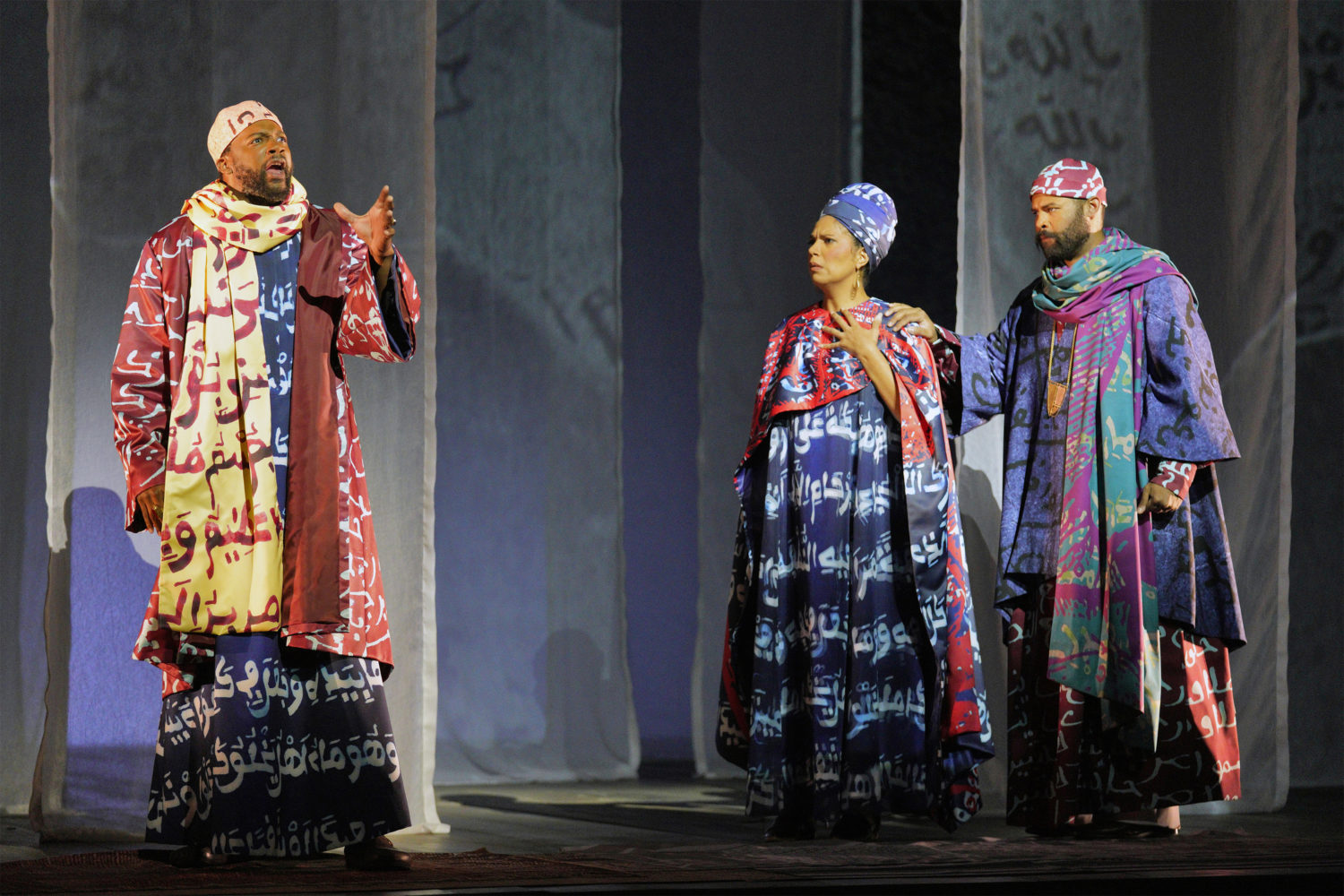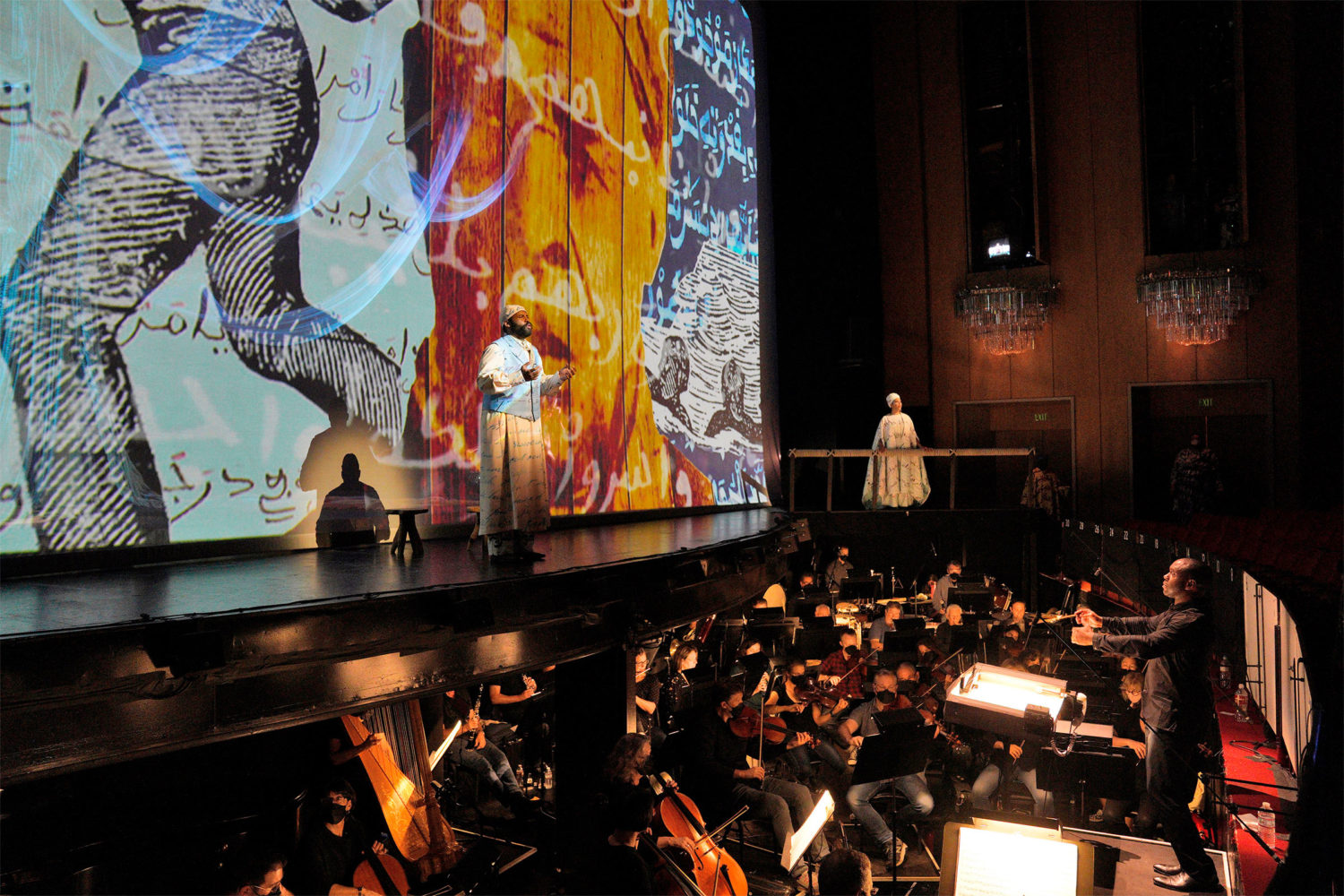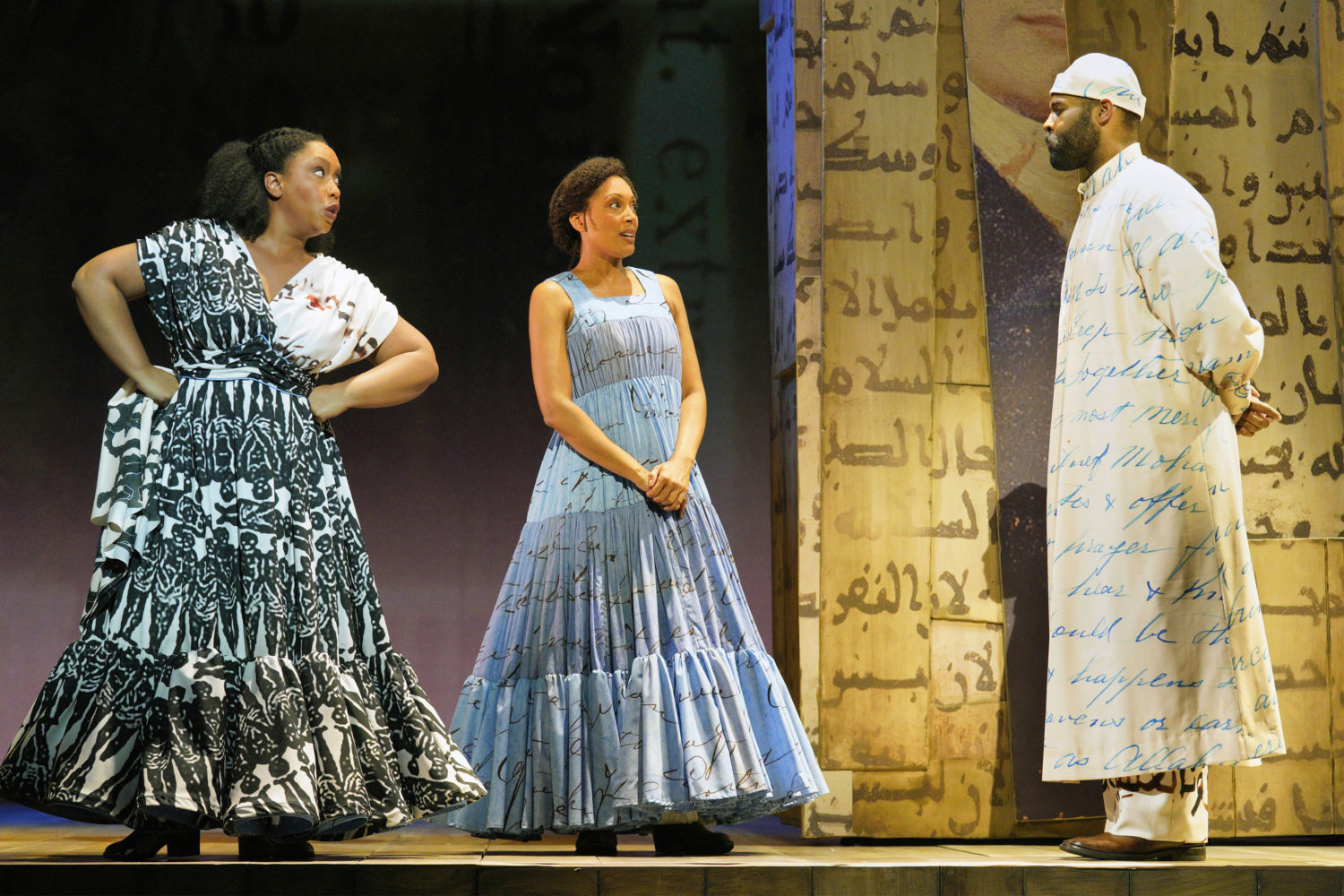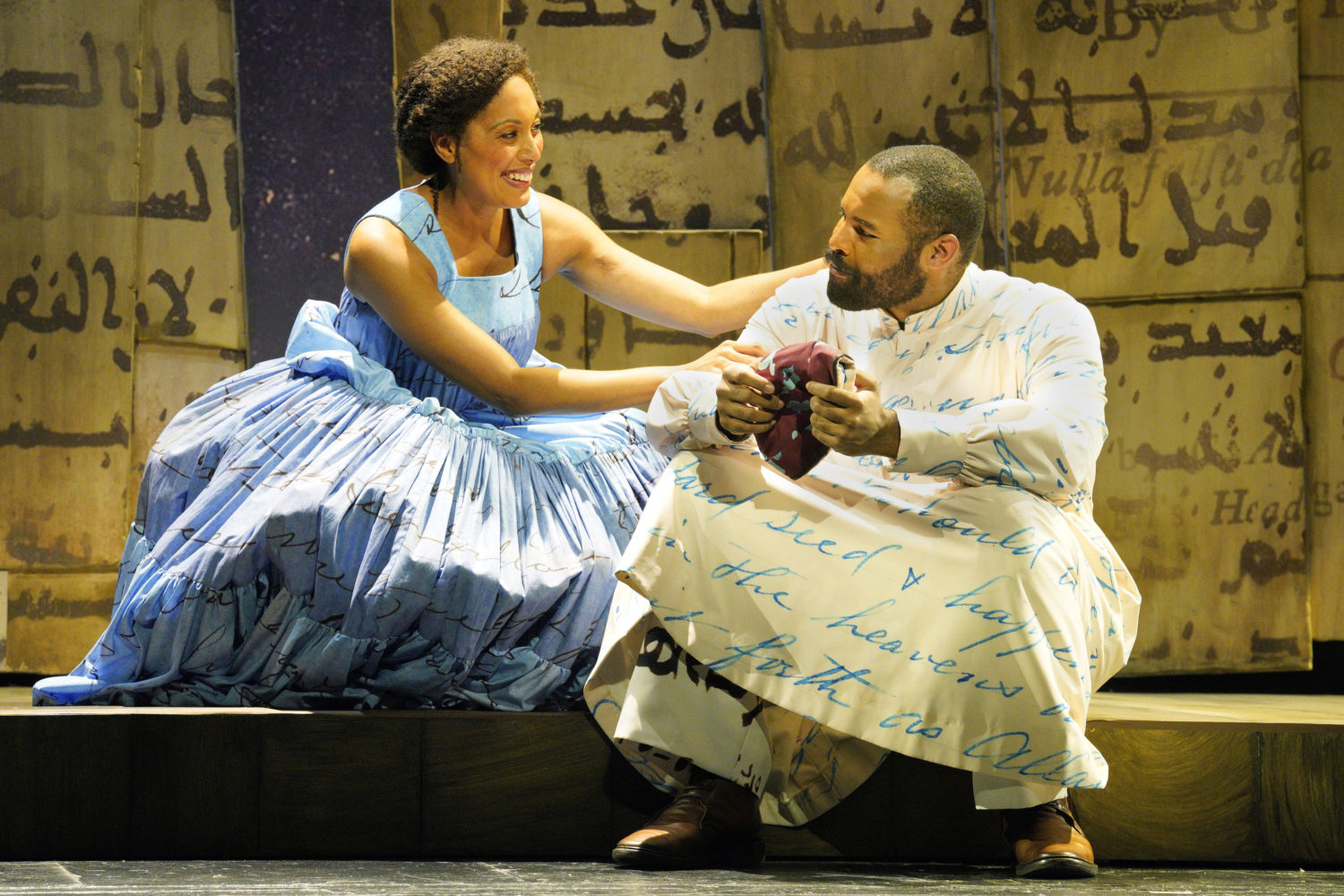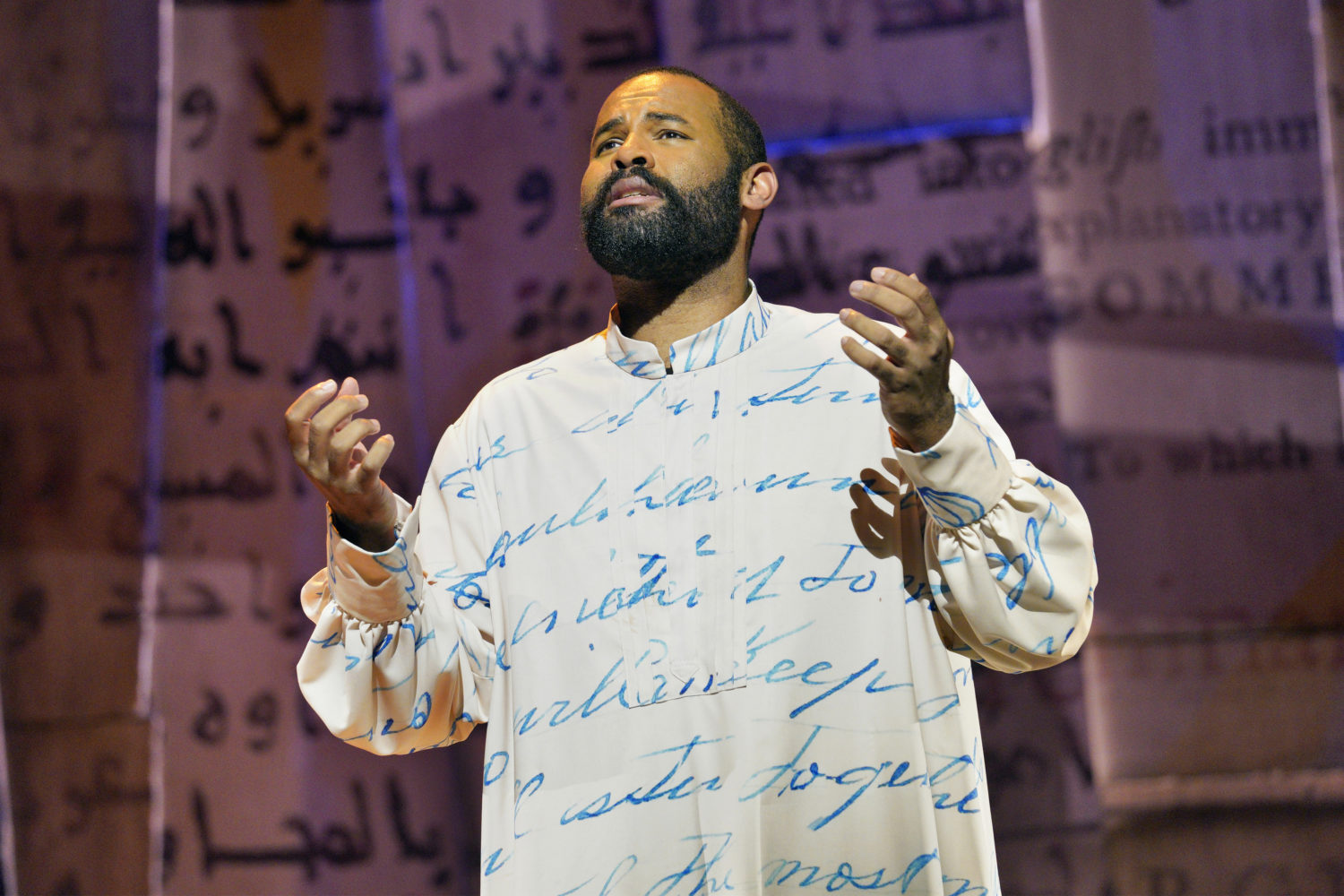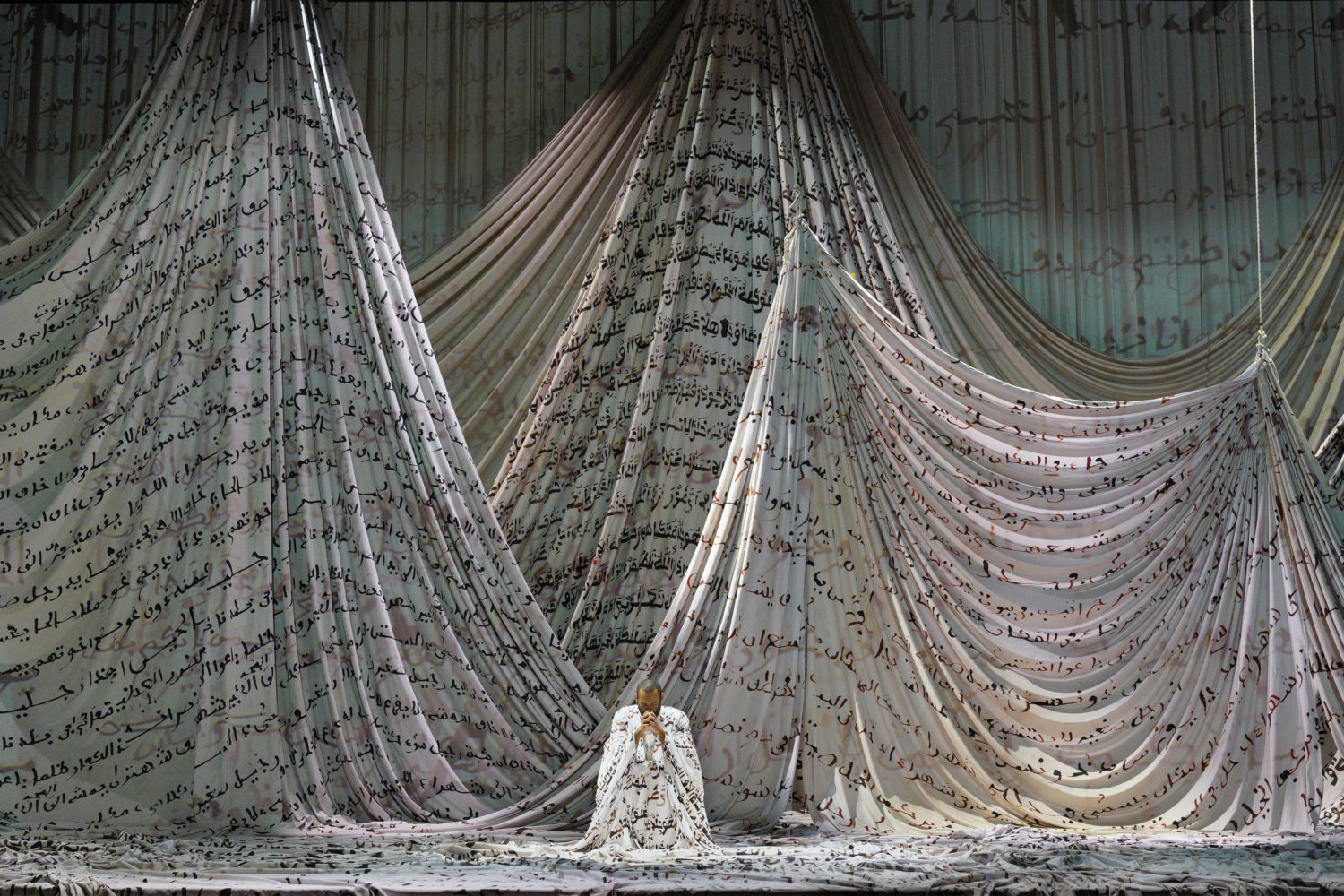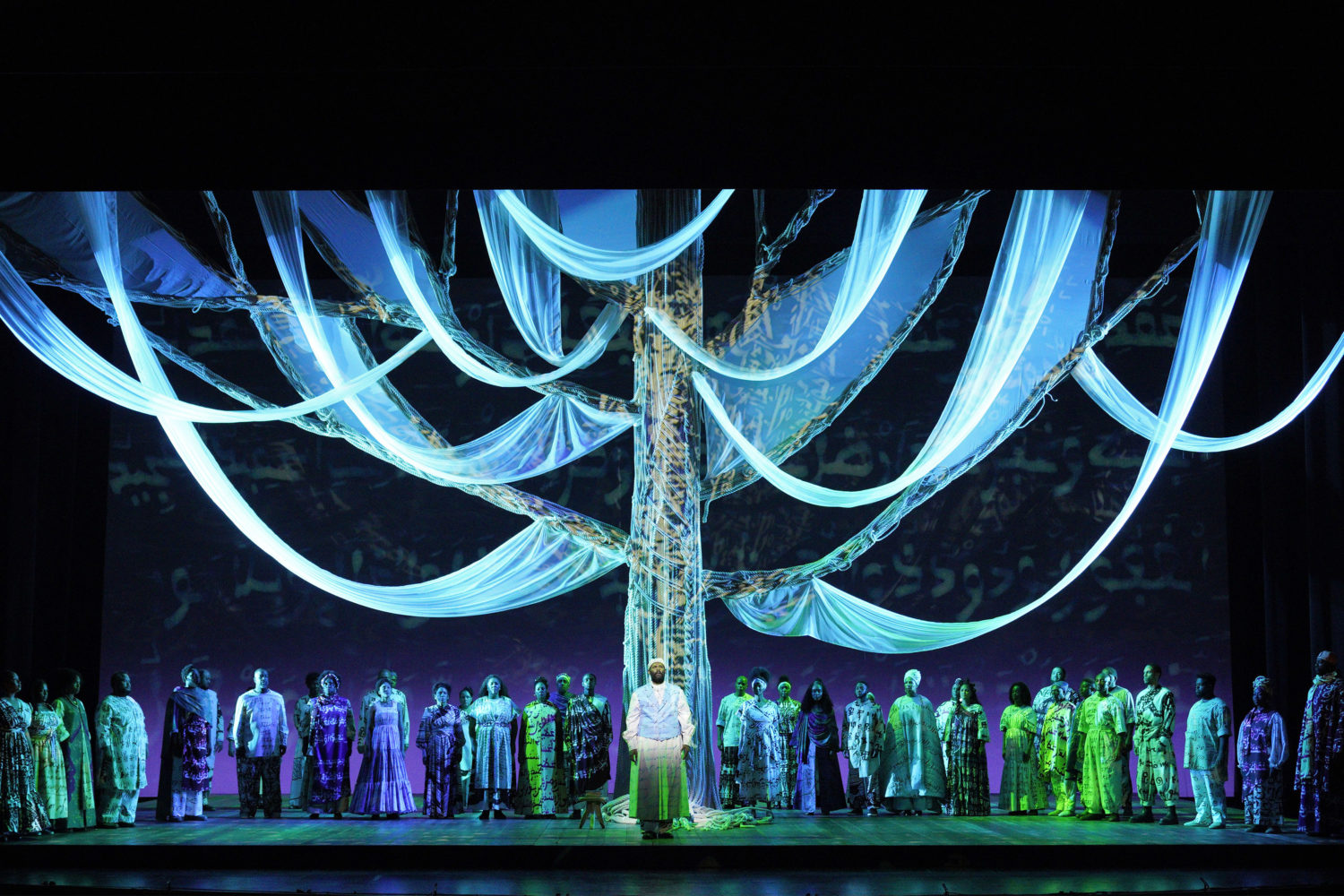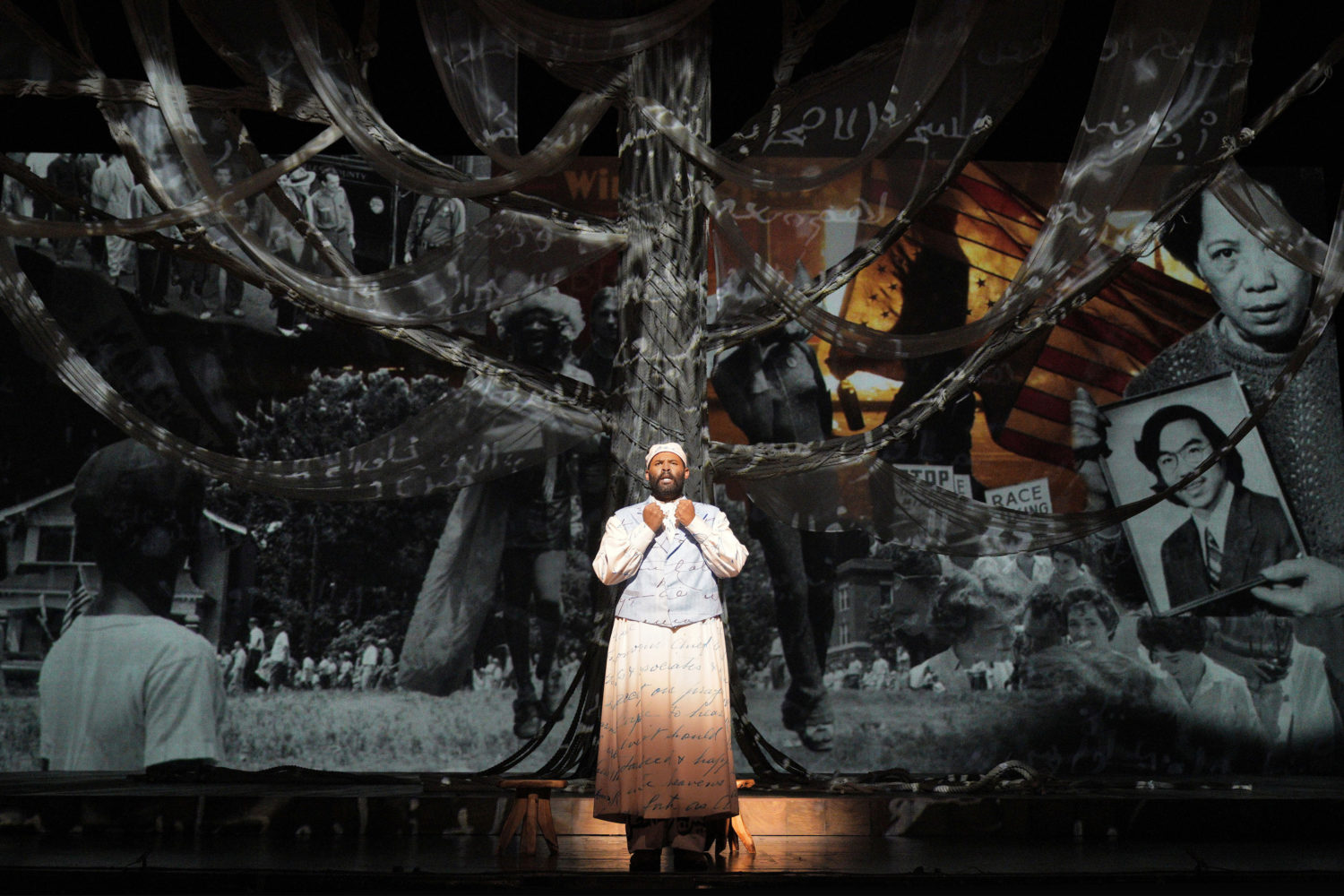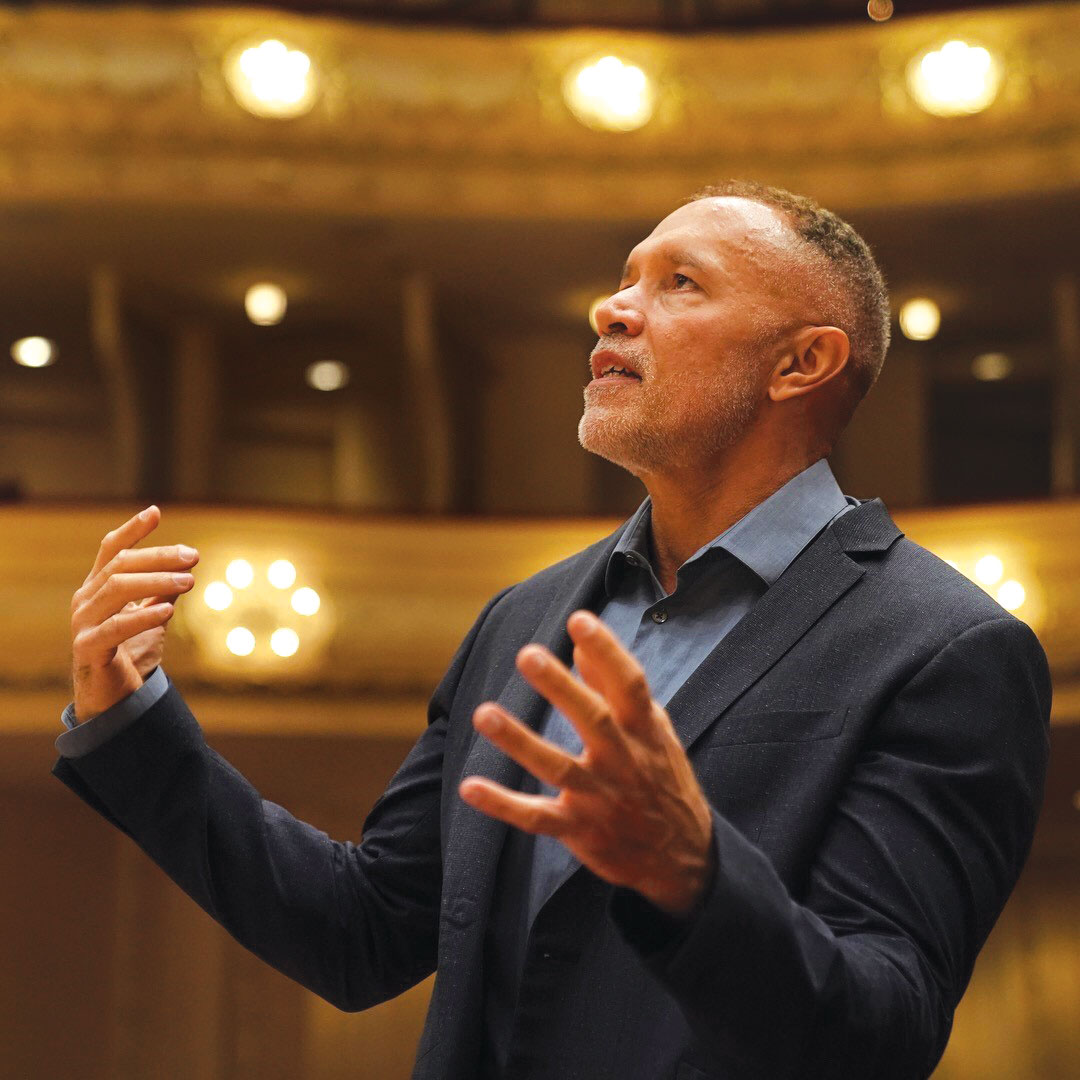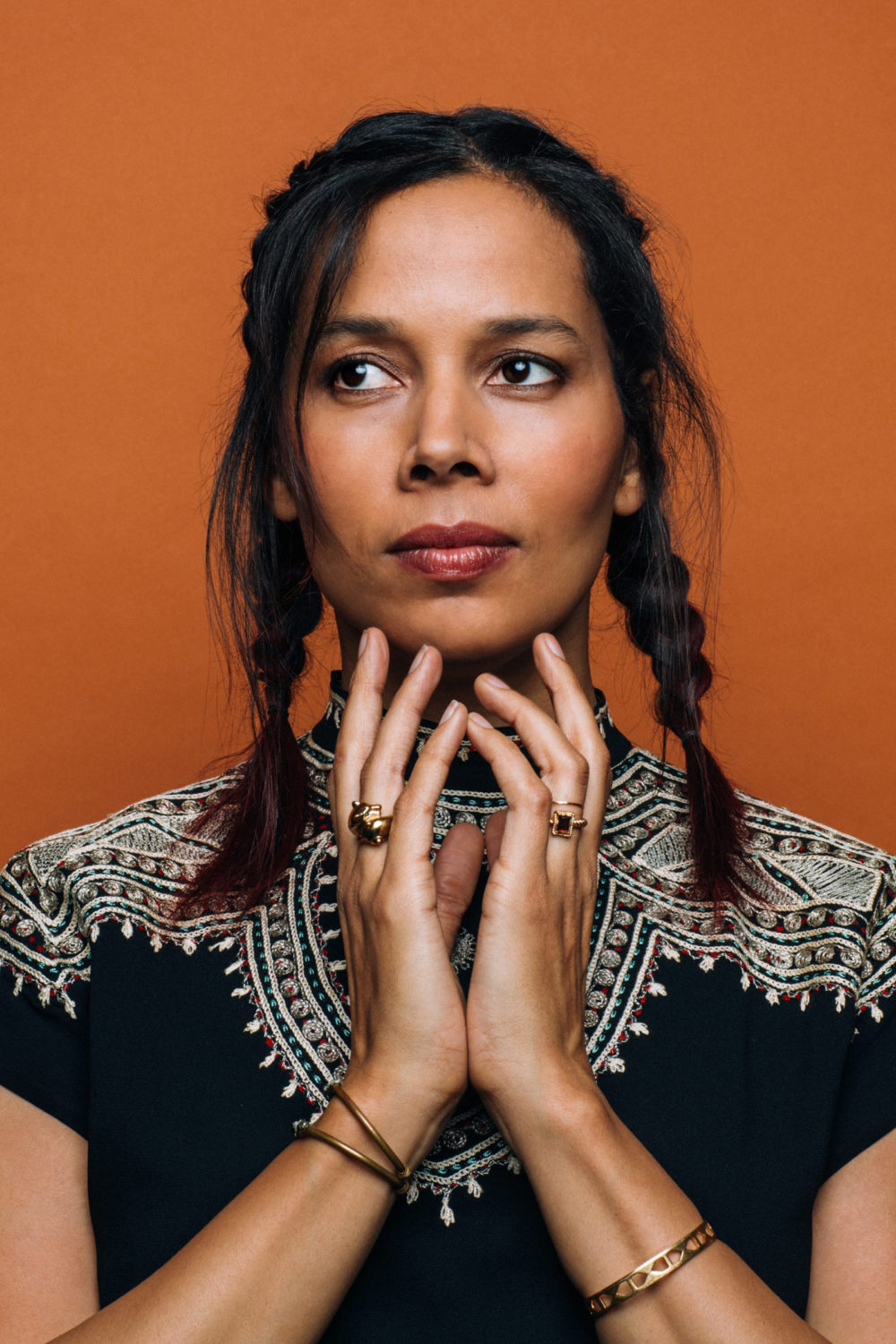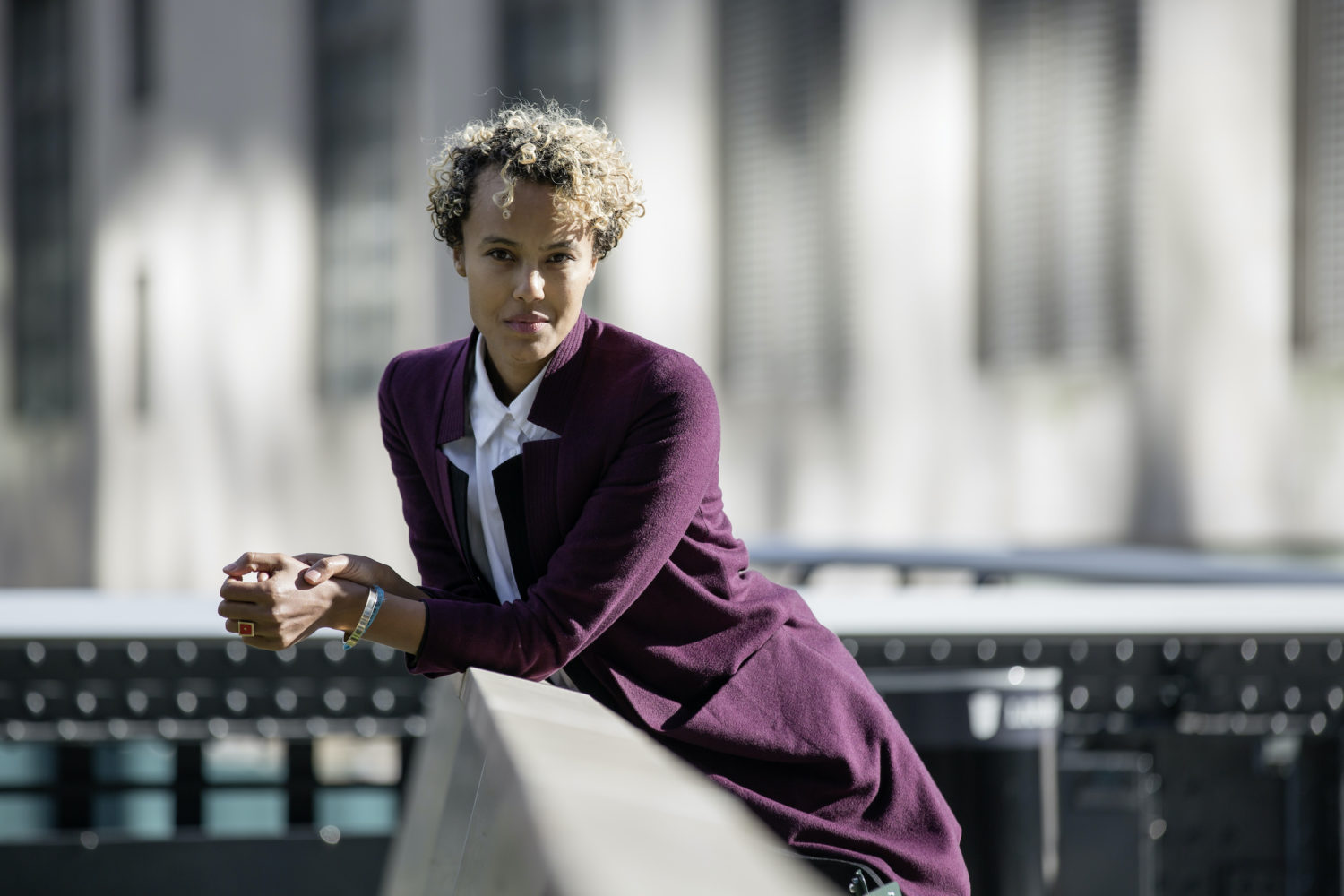It’s the final two performances of the triumphant new opera Omar at Music Center this week, and whether you’re a regular or new to the genre, there is something in this production for you. The true story of Omar Ibn Said — a Muslim scholar kidnapped from Senegal in 1807 and sold into slavery in America — is interpreted for the stage by celebrated singer, musician and librettist Rhiannon Giddens and Michael Abels, a renowned composer and scholar perhaps best known for his work on the films of Jordan Peele. Not only the story and the specifics of its narrative are based on Said’s 1831 memoir (the only known surviving American slavery narrative written in Arabic) — but so is every visual element of the production. From sets to costumes, innovative projections, and translucent edifices, the world built for Omar to inhabit is literally conjured from his story and from his calligraphic handwritten testimony.
As audiences follow Omar’s progress from the fateful day in his home, the violence of his treatment and that of his fellow kidnapped prisoners and the hopelessness of the situation as he finds it once sold are ever present but are not performed. There is trauma as a perennial presence in the story, always in the air, almost a character in itself, but the vast majority of what is narrated within the story concerns questions of faith, ancestor wisdom, love, and survival. Expressed in both the West African and later American spiritualist traditions infused into the language of the operatic field, the score and libretto reflect Omar’s interior life and memory as well as the cultural cues of the history he was living through. Direction by Kaneza Schaal also reinforces this cultural fusion, weaving non-traditional and canonical elements into a tour de force that is both very much an opera — and at the same time, not like any you’ve seen.
https://www.facebook.com/watch/?v=702551844331955
One of the most memorable and inventive elements of the piece is the use of Omar’s handwritten journal pages as the leitmotif for nearly every physical component on stage. Production Designer Christopher Myers is a visual artist and author whose work is equally concerned with restorative social justice, literacy on the realities of African American history, and the powerful materiality of textile as a narrative vessel. Myers and Schaal are married and have worked together before, but never, as Myers tells LA Weekly, on something of the scale of a full opera like this. Recent years have increasingly seen visual artists from Mark Ryden to Will Cotton, Bill Viola, Tacita Dean, Katie Grinnan, and Retna work in set design for the opera — and Myers adds to that tradition with gusto in Omar.
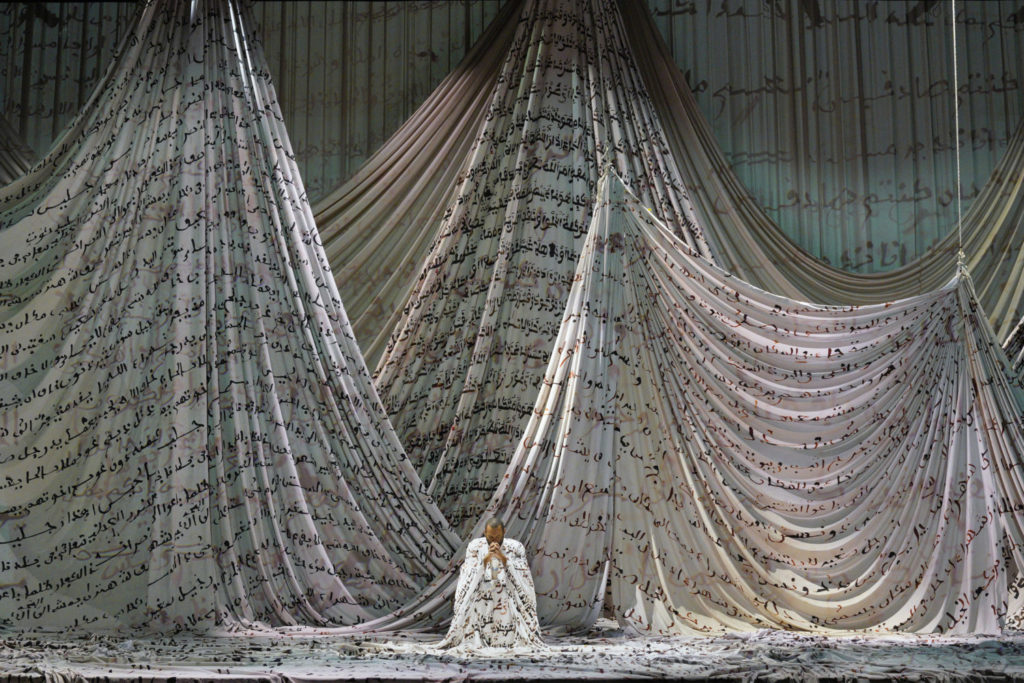
OMAR at LA Opera (Photo by Cory Weaver)
Constructing nearly everything out of fabric including cityscapes of Africa and the American South, county jail cells, plantation house libraries, slave quarters, visualized clouds of prayer, and a showstopping mammoth shade tree that is both emotional and sacred, Myers designed some dozen-plus textiles as part of the project — many of which also for the basis of the costumes — all based on Omar’s handwritten accounts. Merging the narrative’s words as a visual element with The Word acting as a central framework of the story which is in large part about the power of faith is an inspired choice, in which the story becomes not only told, sung, and enacted but also embodied at every moment of the story. And the story in turn is not only about one man’s extraordinary life and character, but about a time in geopolitics whose ramifications are as present today as ever, the importance of remembering one’s ancestors — and in the end about the power of storytelling and deep representation itself.
Music Center, downtown; Final performances: Wednesday, November 9, 7:30pm & Sunday, November 13, 2pm; $15-$274; laopera.org.
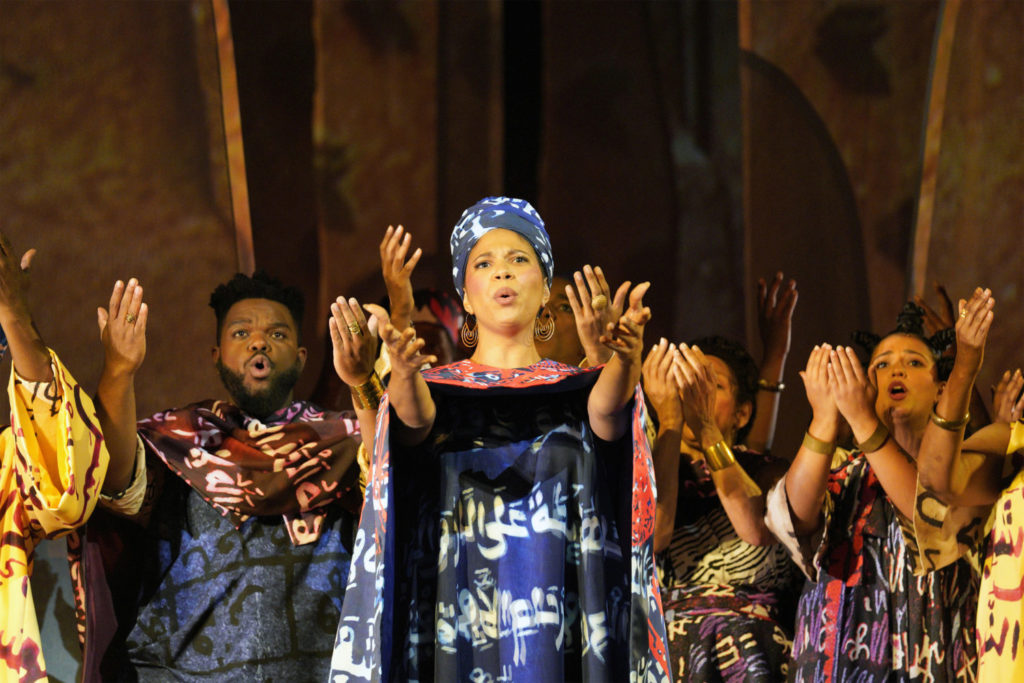
Amanda Lynn Bottoms in OMAR at LA Opera (Photo by Cory Weaver)
Editor’s note: The disclaimer below refers to advertising posts and does not apply to this or any other editorial stories.
Advertising disclosure: We may receive compensation for some of the links in our stories. Thank you for supporting LA Weekly and our advertisers.


